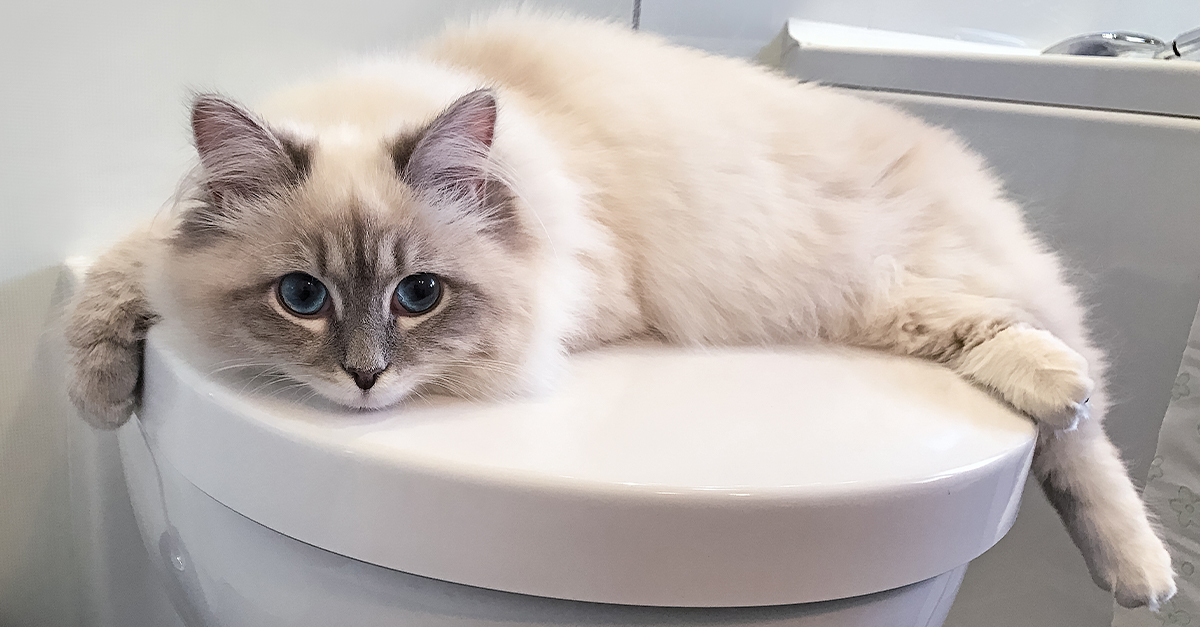Dangers of Flushing Cat Poop Down Your Toilet - Avoid Possible Problems
Dangers of Flushing Cat Poop Down Your Toilet - Avoid Possible Problems
Blog Article
We've discovered this great article involving Don’t flush cat feces down the toilet listed below on the internet and felt it made good sense to write about it with you on this page.

Intro
As pet cat owners, it's essential to bear in mind how we deal with our feline good friends' waste. While it may appear hassle-free to purge pet cat poop down the bathroom, this technique can have detrimental effects for both the atmosphere and human health and wellness.
Alternatives to Flushing
Fortunately, there are more secure and much more responsible methods to deal with feline poop. Take into consideration the following options:
1. Scoop and Dispose in Trash
The most usual method of disposing of feline poop is to scoop it right into an eco-friendly bag and toss it in the garbage. Be sure to use a specialized trash inside story and get rid of the waste quickly.
2. Use Biodegradable Litter
Select biodegradable cat clutter made from products such as corn or wheat. These trashes are environmentally friendly and can be securely taken care of in the garbage.
3. Hide in the Yard
If you have a backyard, think about burying cat waste in an assigned location away from vegetable gardens and water resources. Be sure to dig deep adequate to prevent contamination of groundwater.
4. Mount a Pet Waste Disposal System
Invest in a pet garbage disposal system specifically created for cat waste. These systems use enzymes to break down the waste, minimizing smell and environmental effect.
Wellness Risks
Along with ecological worries, flushing pet cat waste can likewise pose health dangers to humans. Feline feces might include Toxoplasma gondii, a bloodsucker that can trigger toxoplasmosis-- a possibly serious ailment, especially for pregnant ladies and people with damaged body immune systems.
Ecological Impact
Purging cat poop presents damaging microorganisms and bloodsuckers right into the water system, posturing a significant danger to aquatic environments. These contaminants can adversely impact marine life and compromise water quality.
Conclusion
Accountable pet possession extends past offering food and shelter-- it additionally includes correct waste administration. By avoiding purging cat poop down the bathroom and selecting alternate disposal approaches, we can minimize our ecological impact and secure human health.
Why Can’t I Flush Cat Poop?
It Spreads a Parasite
Cats are frequently infected with a parasite called toxoplasma gondii. The parasite causes an infection called toxoplasmosis. It is usually harmless to cats. The parasite only uses cat poop as a host for its eggs. Otherwise, the cat’s immune system usually keeps the infection at low enough levels to maintain its own health. But it does not stop the develop of eggs. These eggs are tiny and surprisingly tough. They may survive for a year before they begin to grow. But that’s the problem.
Our wastewater system is not designed to deal with toxoplasmosis eggs. Instead, most eggs will flush from your toilet into sewers and wastewater management plants. After the sewage is treated for many other harmful things in it, it is typically released into local rivers, lakes, or oceans. Here, the toxoplasmosis eggs can find new hosts, including starfish, crabs, otters, and many other wildlife. For many, this is a significant risk to their health. Toxoplasmosis can also end up infecting water sources that are important for agriculture, which means our deer, pigs, and sheep can get infected too.
Is There Risk to Humans?
There can be a risk to human life from flushing cat poop down the toilet. If you do so, the parasites from your cat’s poop can end up in shellfish, game animals, or livestock. If this meat is then served raw or undercooked, the people who eat it can get sick.
In fact, according to the CDC, 40 million people in the United States are infected with toxoplasma gondii. They get it from exposure to infected seafood, or from some kind of cat poop contamination, like drinking from a stream that is contaminated or touching anything that has come into contact with cat poop. That includes just cleaning a cat litter box.
Most people who get infected with these parasites will not develop any symptoms. However, for pregnant women or for those with compromised immune systems, the parasite can cause severe health problems.
How to Handle Cat Poop
The best way to handle cat poop is actually to clean the box more often. The eggs that the parasite sheds will not become active until one to five days after the cat poops. That means that if you clean daily, you’re much less likely to come into direct contact with infectious eggs.
That said, always dispose of cat poop in the garbage and not down the toilet. Wash your hands before and after you clean the litter box, and bring the bag of poop right outside to your garbage bins.
https://trenchlesssolutionsusa.com/why-cant-i-flush-cat-poop/

I stumbled upon that blog entry about Can You Flush Cat Poop Down The Toilet? while doing a lookup on the web. In case you enjoyed reading our blog posting please be sure to share it. Thank you for going through it.
Click Here Report this page